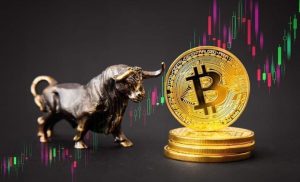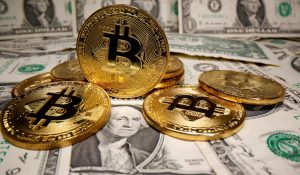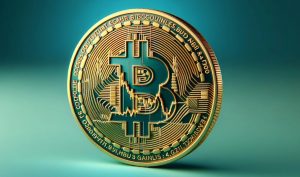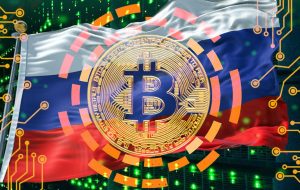This is where the greatest opportunities lie
6 min readTable of Contents
After the large wave of non-fungible tokens in early 2021, the market cooled off in spring. The first hype phase had come to an end. But instead of initiating a lengthy consolidation, the sector continues to develop at a groundbreaking pace. How the market for NFT has changed in just a few months and where the greatest growth and profit opportunities can be found in the future.
Now the superstars and mega brands are coming
The superstars took over the field within a few months. The world’s most famous artists, with millions of followers on Instagram and Co., are now capturing the full attention of the NFT industry. No matter if exceptional footballer Lionel Messi, No. 1 DJ David Guetta or gossip celebrities like Paris Hilton: they are all part of NFT projects. Even the largest corporations in the world, such as Coca-Cola or Visa, are invested in the NFT sector or use it for their own promotional campaigns.
More and more people understand that a completely new value chain is opening up. All people and brands with a certain reach can generate enormous additional income as a result. Nevertheless, little is likely to change in terms of market shares. The most valuable brands and the most famous stars also make the most money. The advertising market is only the tip of the iceberg. In the long term, it’s about nothing less than transforming the analog world into the digital one. These can be material things, such as items of clothing, property or cars, but also immaterial objects, such as patents or licenses. In addition, digital content such as social media accounts or internet domains can already be embodied via non-fungible tokens.
NFT: Too much innovation prevents burglary
Even if no new technology can do without blistering and severe correction phases, there are good reasons that this will not happen so quickly with NFT to a large extent. The innovation cycles seem to be particularly fast in the NFT evolution. Too much new innovation follows for the entire sector to run the risk of entering a downward phase.
While simple pictures of crypto-affine noname artists have passed their zenith, other NFT sectors are only really getting started. So it would be a mistake to generalize about the NFT ecosystem. Rather, the NFT sector can be divided into many individual sub-sectors, such as: digital art, lifestyle and brands, gaming, music, phygital (= physical and digital) objects, etc.
Various sectors are entering the market and are investing billions to secure a place in the digital creator economy. This also explains why the largest funding in European history was only recently made for an NFT start-up. The French company Sorare, known for its digital soccer trading cards, raised $ 680 million at a valuation of $ 4.3 billion. But other NFT companies, such as Dapper Labs with a recent financing of 250 million US dollars, are collecting double- and triple-digit million amounts from well-known investors to build the infrastructure of the NFT economy.
It is a mistake to compare these NFT developments with other developments in the crypto sector. Non-fungible tokens are the first blockchain application that not only appeals to people with a financial and digital affinity, but also the broad masses. Within the next 24 months it can be assumed that most young people from the industrialized nations will come into contact with NFT.
The gamification and visualization of the basic technology blockchain through NFT, especially within social media, cannot be compared with anything before. NFT turns people into crypto users who previously had absolutely no relation to crypto currencies, wallets, dApps etc. and who consciously never wanted to have them.
Current driver: Blockchain Games
The gaming sector is currently making a particularly strong contribution to the establishment of the NFT. Games like Axie Infinity (AXS) could reach billions in capitalization within a few months. To illustrate: In May of last year, the market capitalization of the cryptocurrency AXS was around 8 million US dollars and a price of around 0.12 US dollars. In September of this year, AXS reached a market capitalization of at times 5.6 billion US dollars at a price of over 92 US dollars. Invested correctly, 1,300 US dollars would theoretically have been enough to become a crypto millionaire.
The Axie Infinity is certainly an extreme example, but there are numerous other NFT projects that have grown 100 times and more in the course. The speculation and exaggeration is certainly not to be denied here, but games like Fortnite prove that billions in profits with game items (in-game items) have a fundamental basis that goes beyond short-term speculation.
In view of the rapid growth of the gaming industry, especially in esports and virtual reality, it is not unreasonable that NFTs are becoming the economic cornerstone of the gaming industry. The current market revenue of the gaming industry of 155 billion US dollars (forecast for 2021 according to Statista) is likely to be based to a significant extent on blockchain or token infrastructures in the future.
NFT are above the law
Critics may argue that NFTs are practically worthless from a legal point of view and, according to the current legal situation, cannot embody property rights or rights of use. Corresponding rights can only be included via subsidiary agreements. For example, you can only become the owner of a physical work of art, but not a digital one. The fact that one only acquires an electronically stored date – this is how the legal description of an NFT would have to be defined – seems to have bothered only very few so far. The value of an NFT goes beyond the legal fundamentals as it derives its value from the social construction.
Anyone who considers the NFT to be a digital thing is also the owner in the eyes of society and can enjoy status recognition and collector prestige, even if he does not acquire any image rights on the example of a digital work of art. Non-fungible tokens cultivate an abstract understanding of digital value that is defined by the subjective perception of people and not by law – at least so far.
The US $ 90 trillion market or the mirroring of world GDP
Everyone underestimates the market for NFT. The reason: What we understand by NFT today has very probably very little to do with what NFT will be 10, 20 or 30 years from now. If the analog world is translated more and more into the digital over the next few years, the mapping of all non-fungible objects will also be mapped via NFT or related token constructs such as social tokens.
In the simplest case, this means that everything will have a digital twin. Everything that is available in analog is then also available again in a digital version in order to be able to establish a digital secondary economy in the metaverse. At the moment, this may all sound like science fiction, but in practice, numerous current projects aim to do just that. Regardless of whether in a centralized form through Facebook’s efforts to set up a metaverse, or through decentralized alternatives such as Decentraland.
So if you wanted to know how much value could be tied up in NFT in the future, you could – as crazy and aloof as it may sound – the current one worldwide GDP define it as a target. According to estimates by the IMF, global GDP was 87 trillion US dollars in 2019. Whether it will ever come to this and how many more decades it will take is of course pure speculation.






